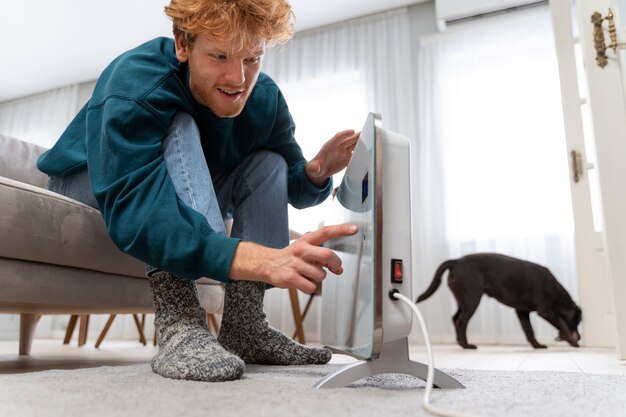
Welcoming a new furry friend into your home is always thrilling. The bond you share can be incredibly rewarding. Understanding how to communicate effectively with your canine buddy is essential. Positive reinforcement methods make learning fun and engaging. They can transform your pup’s behavior positively.
In this approach, simplicity reigns. Using sound cues, you can help your dog grasp various commands effortlessly. When your little companion understands what’s expected, the spark ignites. Soon, you’ll see improvement in their actions. Repetition and consistency are key.
Many pet owners find joy in the process. It’s not just about obedience; it’s about creating a strong relationship. Patience is crucial, as each dog learns at their own pace. Observing their progress can be incredibly satisfying. With the right techniques, you’ll create an atmosphere of trust and understanding.
As you embark on this journey, remember it’s a partnership. Your commitment fosters confidence in your pup. The use of clear signals will make communication smoother. Enjoy the little milestones, as every small victory counts. A harmonious connection will flourish as you navigate this experience together.
Understanding Clicker Training Basics
This method revolves around the concept of positive reinforcement. It utilizes the sound of a small device to mark desired behaviors. Many pet owners find this approach both effective and enjoyable. When executed properly, it enhances communication between you and your furry companion.
In essence, the essence lies in making learning a fun experience. It’s about encouraging your pet to repeat actions that have led to rewarding outcomes. You’ll discover that the right timing is paramount. By associating the sound with a specific behavior, you create a powerful connection.
Why Choose This Approach?

Using this technique offers several advantages. Firstly, it enhances your relationship with your pet. Secondly, it allows for a clear understanding of what you expect. The simplicity and clarity make it accessible to anyone willing to learn. Furthermore, both parties can enjoy the process.
Key Components to Consider
| Component | Description |
|---|---|
| Marker Sound | A distinct sound that indicates a behavior has been recognized. |
| Timing | Immediate feedback is crucial for an effective learning experience. |
| Rewards | Consistent and motivating treats enhance the learning process. |
To create a successful experience, ensure you have everything prepared. The right environment, appropriate treats, and a positive mindset are essential. Once established, you will find that engagement and cooperation significantly improve. Moreover, the thrill of observing your pet succeed will make every effort worthwhile.
Benefits of Using Clicker Training
Employing this method brings a myriad of advantages. It fosters a strong bond between the individual and the animal. Clear communication is established, which is vital during the learning process. This approach creates an enjoyable experience for both parties. Consistency becomes easier to achieve, leading to faster results.
Moreover, the technique relies on positive reinforcement, which encourages repetition of desired behaviors. When excitement and joy accompany learning, the pet is more likely to engage willingly. Unlike traditional methods, this approach minimizes stress and fosters trust. By using a distinct sound to mark desired actions, one can facilitate quicker understanding.
Some additional benefits include improved focus from the pet, as they learn to associate the sound with rewards. It is also a versatile method that can be adapted for various skills and commands, from simple obedience to complex tricks. The use of a positive marker encourages creativity in both the trainer and the pet, allowing for a variety of exercises to choose from.
In time, as learning progresses, the animal develops confidence, which can extend beyond training sessions. Successfully mastering new skills leads to a sense of accomplishment that can significantly enhance the overall relationship. The playfulness and enjoyment fostered during these interactions create memorable moments, making the entire experience satisfying.
Essential Tools for Clicker Training
Having the right equipment can make all the difference. It helps by creating a positive environment. Engaging your furry friend is crucial. The right tools ensure smooth interactions. Alongside skills, preparation is key to success.
First and foremost, a sound signaling device is necessary. Many options exist, from mechanical clickers to smartphone apps. Each type has its unique features. The choice depends on what suits you best.
Other Helpful Supplies
In addition to the sound maker, consider using treats as reinforcers. Treats must be small and appealing, like pieces of cheese or soft kibble. Frequent rewards keep your pet motivated. Moreover, having a treat pouch can simplify the process and allow for quick access, making rewarding moments seamless, which is essential for maintaining engagement and enthusiasm during the sessions.
Creating a Positive Environment
Lastly, a quiet and safe space is important. This allows your pet to focus and minimizes distractions. Choose a comfortable area, free from noises that may interrupt sessions. A mat or soft surface can make it more inviting. Having a designated spot helps the pup associate that area with learning, making future training more effective and enjoyable.
| Tool | Description |
|---|---|
| Sound device | A clicker or app to signal desired actions effectively. |
| Treats | Small, tasty rewards that motivate and encourage good behavior. |
| Treat pouch | An easy way to carry rewards, ensuring quick access during sessions. |
| Training space | A quiet and distraction-free area where learning can take place comfortably. |
Step-by-Step Training Techniques

When embarking on the journey of teaching your young canine, having a structured approach is essential. Every action shapes behavior. It’s important to stay consistent and patient throughout the process. This can lead to a strong bond between you and your furry friend. Remember, progress may be gradual, but each small step contributes to a larger goal.
Begin with a calm environment free from distractions. Choose a quiet space where your companion can focus entirely on you. Start with simple commands like “sit” or “stay”. Use a cheerful tone to encourage enthusiasm. Reinforce achieving these tasks promptly with treats or positive reinforcement.
| Step | Action | Tip |
|---|---|---|
| 1 | Get their attention. | Use their name to engage them. |
| 2 | Introduce a command. | Keep it short and clear. |
| 3 | Demonstrate the action. | Show them what you want them to do. |
| 4 | Reward instantly. | Offer a treat or praise immediately. |
| 5 | Repeat consistently. | Practice daily for reinforcement. |
As you advance, gradually introduce more complex tasks and commands. Vary the rewards to keep your companion motivated and interested. Every session should feel like a game, filled with joy and positive experiences. Be attentive to their reactions, adjusting techniques when necessary to ensure understanding.
Ultimately, the journey consists of patience and perseverance. Embrace each moment spent together, as it’s not just about the destination but the bond formed along the way. Keep sessions short to maintain enthusiasm. Celebrate successes, no matter how minor, as they pave the way for greater achievements.
Common Mistakes to Avoid
When it comes to teaching your young canine companion, certain pitfalls can hinder progress. Recognizing these errors is crucial for effective communication. You may find yourself facing challenges that slow down the learning process. Addressing these issues early can help create a more positive experience.
Here are some of the frequent missteps:
- Inconsistent timing of rewards can confuse the dog.
- Focusing solely on corrections instead of encouragement is counterproductive.
- Using unclear signals may lead to misunderstandings.
- Neglecting to practice in diverse environments can limit adaptability.
- Expecting instant results can lead to frustration.
For instance, if a reward is given too late after a desired action, your furry friend may not associate the reward with the behavior you want to reinforce, leading to confusion or mixed signals and ultimately delaying progress in the learning journey.
Understanding these common errors allows you to adapt your approach. Patience is key. Celebrate successes, no matter how small. By fostering a supportive atmosphere, you’ll pave the way for effective learning and a stronger bond with your pet.
Progress Tracking and Adjustments
Monitoring development and making necessary changes is crucial in every educational process. Understanding how a young companion is responding to different techniques helps improve efficiency. Each session should be considered an opportunity for growth and adaptation. Observing behavior closely allows for tailored experiences that can enhance learning.
Develop a system to note progress consistently. This could be as simple as a notebook or a mobile app. Keeping track of successes and challenges lets you identify patterns. Through this approach, you can see which methods yield the best results over time. Likewise, it enables adjustments tailored to specific needs.
Simple Tracking Methods
| Date | Behavior Attempted | Success Rate | Notes |
|---|---|---|---|
| 2023-10-01 | Sit | 80% | Needs occasional reminders. |
| 2023-10-02 | Stay | 50% | Shorter duration practiced, improvements needed. |
Making Adjustments
Feedback is not just about recognizing progress, but also about adjusting your methods. If an approach isn’t yielding desired results, explore different options. It may be necessary to change rewards or the pace of sessions. Consider the environment, too; distractions can hinder focus. Ultimately, flexibility allows for a more successful journey.
Q&A:
What is clicker training and how does it work for puppies?
Clicker training is a positive reinforcement method used to teach puppies new behaviors. It involves using a small handheld device that makes a distinct “click” sound when pressed. This sound marks the exact moment a puppy performs the desired behavior, allowing the dog to make a clear connection between the action and the reward. After the click, it’s important to immediately provide a treat or praise. This method is effective because it encourages puppies to repeat behaviors that earn them rewards, creating a fun and engaging training experience.
How can I start clicker training my puppy as a beginner?
Starting clicker training as a beginner is simple and fun! First, purchase a clicker, which is inexpensive and readily available. Choose a quiet area to minimize distractions and gather some of your puppy’s favorite treats. Begin by letting your puppy explore the environment and wait for them to exhibit a behavior you want to reinforce, such as sitting or lying down. The moment they do so, click the clicker and immediately give them a treat along with praise. Repeat this process several times to help your puppy associate the click sound with a reward. Keep the sessions short, around 5-10 minutes, to maintain your puppy’s focus and excitement.
What common mistakes should I avoid when clicker training my puppy?
Common mistakes to avoid during clicker training include clicking at the wrong time, using the clicker inconsistently, and forgetting to reward immediately after clicking. Timing is crucial; if you click too late, your puppy may connect the sound with an unwanted behavior rather than the action you intended to reward. Consistency is also important; if you only use the clicker sometimes, your puppy may become confused about when their behavior is being reinforced. Additionally, always pair the click with a treat or praise right after the click to strengthen the association. Lastly, avoid long training sessions, as they can lead to boredom—keep things short and enjoyable for your puppy.
How long should I train my puppy each day using a clicker?
The ideal training duration using a clicker varies depending on the age and focus of your puppy, but generally, sessions should be kept short—ranging from 5 to 10 minutes—two to three times a day. Puppies have short attention spans, so it’s vital to keep them engaged without overwhelming them. Training should be fun and positive, allowing your puppy to absorb the concepts without frustration. After each session, give your puppy a break and some playtime to help reinforce the bond between you and maintain their enthusiasm for training. As your puppy progresses, you can gradually increase the complexity of the tasks while still adhering to the short, positive training sessions.
Video:
Puppy’s first clicker training lesson
Reviews
David
As a first-time dog owner, I found this guide to clicker training for puppies incredibly helpful. The step-by-step instructions are clear and easy to follow, making it perfect for beginners like me. I appreciate the emphasis on positive reinforcement and how it helps build a strong bond with my puppy. The tips on timing the click and treating are particularly useful, as I was unsure how to effectively use the clicker initially. I also enjoyed the section on common mistakes to avoid; it really helped me troubleshoot some issues I was encountering. Overall, this guide has given me the confidence to start training my puppy in a fun and engaging way. I’m already seeing positive results, and I can’t wait to progress to more advanced commands. Thanks for putting this together!
Brian
I just finished reading the “Ultimate Guide to Clicker Training for Puppies for Beginners,” and I found it incredibly informative and easy to understand! As a new puppy owner, I was a bit overwhelmed with all the training methods out there, but this guide simplified everything for me. I loved how it broke down the clicker training process step-by-step, making it approachable for someone like me who had no prior experience. The tips on timing and consistency were particularly helpful, as I often struggled with knowing when to click. I also appreciated the emphasis on positive reinforcement, which aligns with my belief in building a trusting relationship with my puppy. The section on common mistakes was eye-opening and made me more aware of what to avoid. I can’t wait to start implementing these techniques with my little furball! Thank you for such a comprehensive resource. I feel more confident about my training journey now!
Alex
I just finished reading your “Ultimate Guide to Clicker Training for Puppies for Beginners,” and I must say, it’s an absolute gem! As a new puppy owner, I often felt overwhelmed by the various training methods out there, but your step-by-step approach has made things so much clearer. I loved how you broke down the clicker training process into manageable chunks, making it easy to understand and follow. The tips on timing the clicks and rewarding my puppy immediately have been particularly helpful—I can already see a positive change in her behavior! I also appreciate the emphasis on patience and consistency. It’s comforting to know that mistakes are part of the learning process, both for my puppy and me. Your personal anecdotes added a lovely touch, making the guide relatable and encouraging. I’ve already started practicing some of the techniques you shared, and I can’t wait to see how my pup responds as we continue our training journey together. Thank you for providing such a valuable resource; it truly feels like a supportive companion in my adventure as a puppy parent!
Anna Smith
As a new puppy owner, I found this guide incredibly helpful! Clicker training seemed a bit daunting at first, but the step-by-step instructions made it much easier to understand. I love how you emphasize the importance of positive reinforcement; it aligns perfectly with my philosophy of training. The tips for introducing the clicker were particularly useful, and my puppy responded much quicker than I expected. I also appreciate the emphasis on consistency and patience—two things I know I need to work on! The sections about common mistakes have saved me a lot of time and frustration; I had no idea that I might be clicking too late or not rewarding consistently. I feel much more confident now and can see the bond between my puppy and me strengthening with each session. Thank you for such a comprehensive resource! I can’t wait to put the advanced techniques into practice as my pup learns more commands. This guide is a must-read for anyone starting their training journey!
DarkKnight
I just finished reading the “Ultimate Guide to Clicker Training for Puppies for Beginners,” and I have to say, it’s incredibly insightful! As a new dog owner, I’ve always been overwhelmed by the numerous training methods available, but this guide broke everything down into clear, manageable steps. The emphasis on positive reinforcement really resonates with me, as I believe that building a trusting relationship with my puppy is essential. The explanations on how to effectively use the clicker to communicate desired behaviors were particularly helpful. I appreciated the practical examples provided, making it easy to visualize how to implement this training method in everyday situations. Also, the troubleshooting tips for common issues faced by beginners are a lifesaver! I’m excited to start applying these techniques with my puppy. Thanks for such a comprehensive resource—it’s a must-read for anyone looking to train their furry friend!

